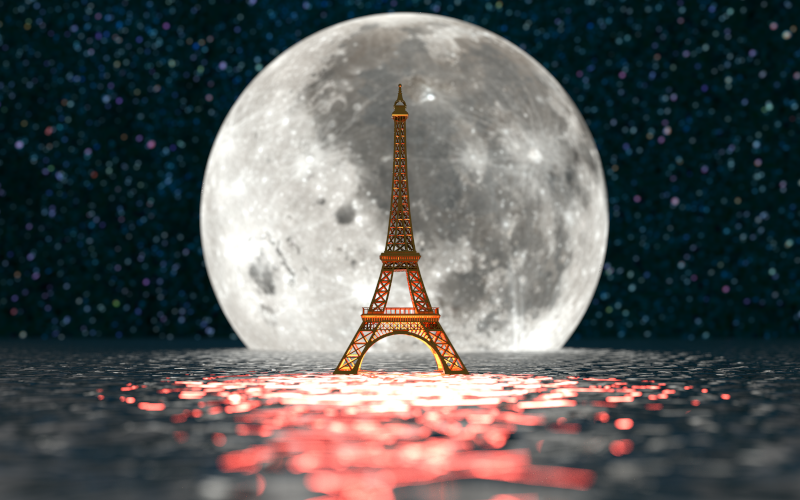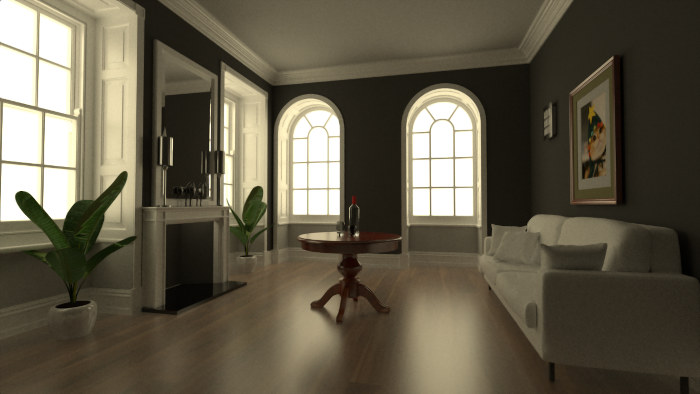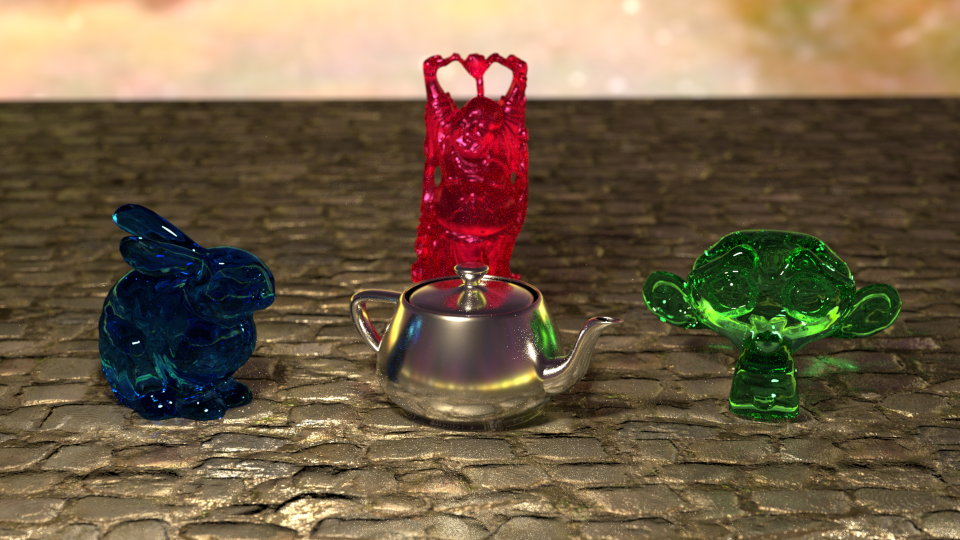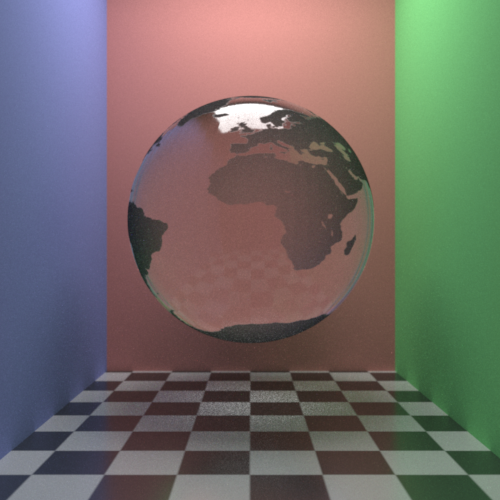You can find more renders HERE like a High Res version of the first render.
ggr is a physically based offline renderer written in C++. The purpose of the project is to create a renderer that can create realistic pictures, indistinguishable from ones taken from a real camera and to create practice grounds to write and test more complicated methods for computer graphics. Although ggr was entirely written from scratch it had its linear algebra classes replaced with GLM
- Path Tracer: This integrator computes light paths (radiance paths) that start from the camera. It uses the surface's BRDF to increment the path with each bounce and Russian roulette to decide when to end it. This integrator supports every material and can estimate both direct and indirect lighting. The path tracer is the most used integrator to calculate global illumination in most offline renderers.
ggr currently supports six materials but they are enough to emulate most of the real life with proper parametrization. An all purpose (uber) material is currently on the works that will be added in the future. All of the materials can be parametrized not only with values but also with texture maps like a roughness texture map. ggr also supports bump mapping with image textures. The list of the current materials are:
- Matte material: A fully diffuse material that reflects light uniformly over the hemisphere. These materials are also known as Lambertian.
- Mirrors: A material that completely reflects like using a fully specular delta-function BRDF.
- Transparent : A material that refracts and reflects light using a specular delta-function BRDF. This material is sampled using the surfaces Fresnel factor to minimize variance.
- Metal: A material described by the Cook-Torrance microfacet model. This material reflects light depending on the surface's roughness. The roughness parameter controls the surface's microfacet distribution and thus changes the way that light reflects of off it. To minimize variance, this material is sampled using importance sampling by first sampling a microfacet normal and then converting the pdf.
- Glass: A material described by the refraction microfacet model by B. Walter et al. This material can create rough glass-like surfaces like iced windows. To minimize variance, the sampling direction (reflection or refraction) is first chosen depending the surface's Fresnel factor and then the same scheme of importance sampling as the metal material is used.
- Plastic Material: A combination of a diffuse BRDF and a microfacet reflection BRDF that is controlled by a parameter.Although it is called plastic, with proper parametrization this material can describe many real life materials like marble, fined wood, ceramic surfaces or leather.
ggr only supports triangle meshes. This decision was taken to have a consistent ray-intersection test. There are currently three pre-written shapes that are converted into triangle meshes: Cubes, spheres and planes. ggr also supports Wavefront(.obj) files for loading triangular meshes from 3D modeling progrms.
The only realistic light model is the area light so ggr only supports area lights(or surfaces that have an emission material on them). ggr also supports spherical skyboxes. These are lights that are infinitely far away from the scene and surround the scene like a sphere.
ggr tries its best to minimize variance when possible. As described in some of the materials, whenever possible, ggr will use better methods of sampling that reduce variance (eg importance sampling). Another part that uses such sampling techniques is the direct lighting sampling. ggr will sample direct lighting using multiple importance sampling. This is done by calculate weights and then using importance sampling both on the surface and the light distribution of the scene to obtain the result. This result is then weighted using the balanced heuristic. ggr also has a Halton sampler to provide low discrepancy samples for any dimension using Halton sequences. More samplers will be added in the future like a stratified sampler or a Sobol sampler. For filtering, ggr currently supports a simple box filter, a Gaussian filter and a Lanczos filter but will add more in the future. All samples for camera are also generated using the filter's distribution to minimize radiance.
The only camera models that ggr currently supports are the typical projective camera models: perspective and orthographic cameras. Both of these models support a depth of field option as well, using the thin lens model approximation. More realistic camera models will be added to the future.
ggr fully supports image textures but only supports PPM files for loading them. ggr only supports PPM files as the only option to save rendered images as well. This was done for the simplicity of the PPM file description and in the future more file formats will be supported. For texture filtering, ggr has not only the typical bilinear and trilinear filters but also, an anisotropic EWA filter that is used in most renderers.
To increase speed ggr limits ray intersections using a BVH-like accelerator that reject whole groups of primitives, decreasing rendering times. ggr also utilises multiple threads that render tiles in parallel.
ggr does not a have main function right now. In order to run it, you must write a cpp file that contains a main function and include the files you need yourself. You can see some examples in the examples folder. Although the current workflow is tedious, the final goal is to have a scripting like language that the renderer will parse to create an image. To compile a project, use the g++ compiler and add the -Isource flag to include the files you need. You must also include the -pthread flag for the thread includes. Example: g++ -Isource {source files} -O3 -pthread -o ggrtest tests/test.cpp
You can also use cmake to build the project. Just run cmake and then use make to compile everything. This will compile all examples which then you can run. When you run an example you can run it without any arguments or with 2, the first being the number of samples per pixel and the second the number of threads to use. For example to run example0 using 32 samples and 4 threads run [example-binaries-folder]/example0 32 4.
If you find a bug or want an addition, open an issue and I will look into it. If you want to contribute, you can open a pull request and I will look into it as well. I will write a more detailed documentation of the renderer and some programming rules to follow when contributing in the future.
- Linear Algebra Library: GLM
- Random number generator: PCG
- Rendering resources: Benedikt Bitterli
- Textures/Models/Skyboxes: Poly Haven
- The CG Bible: PBRT



